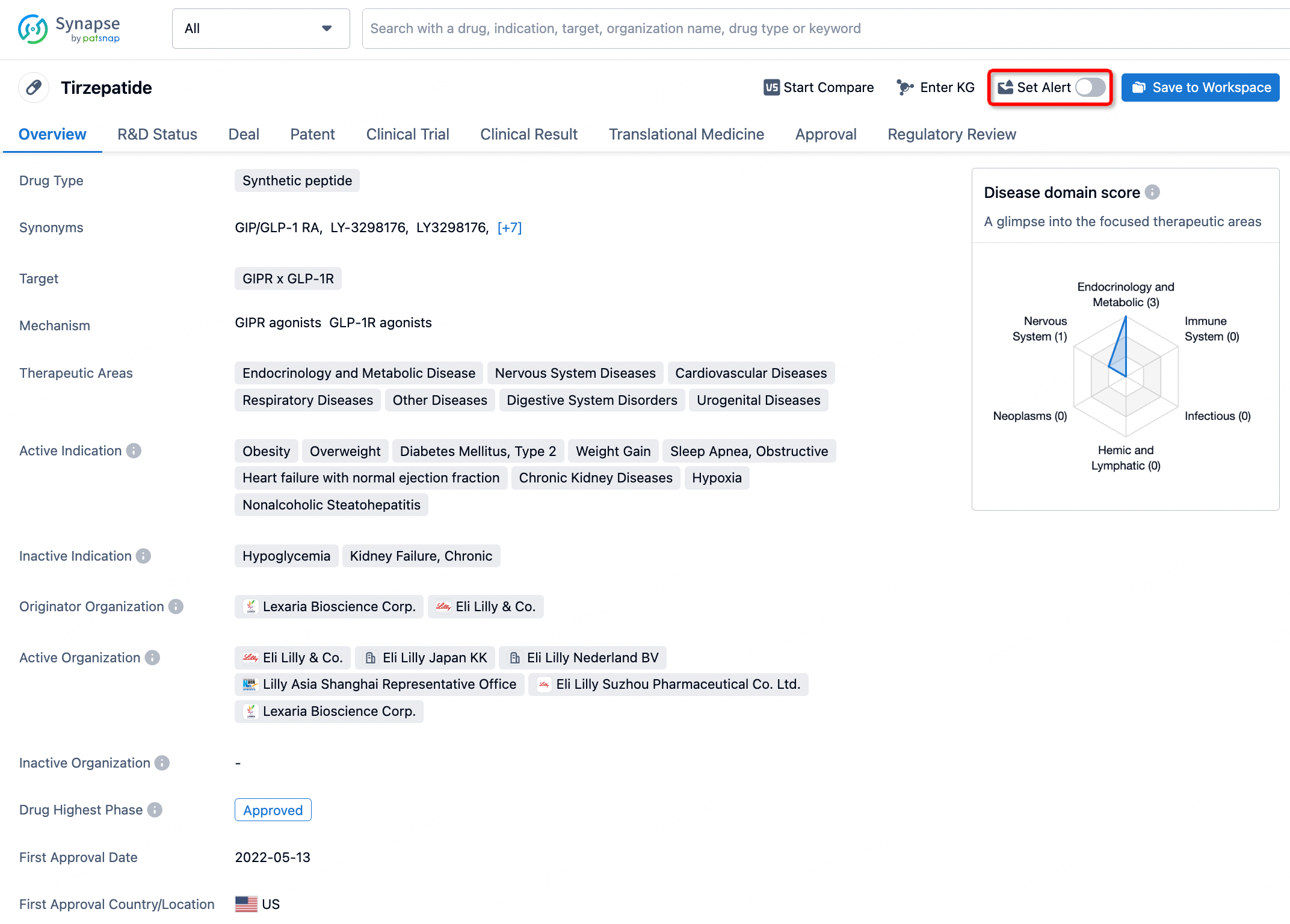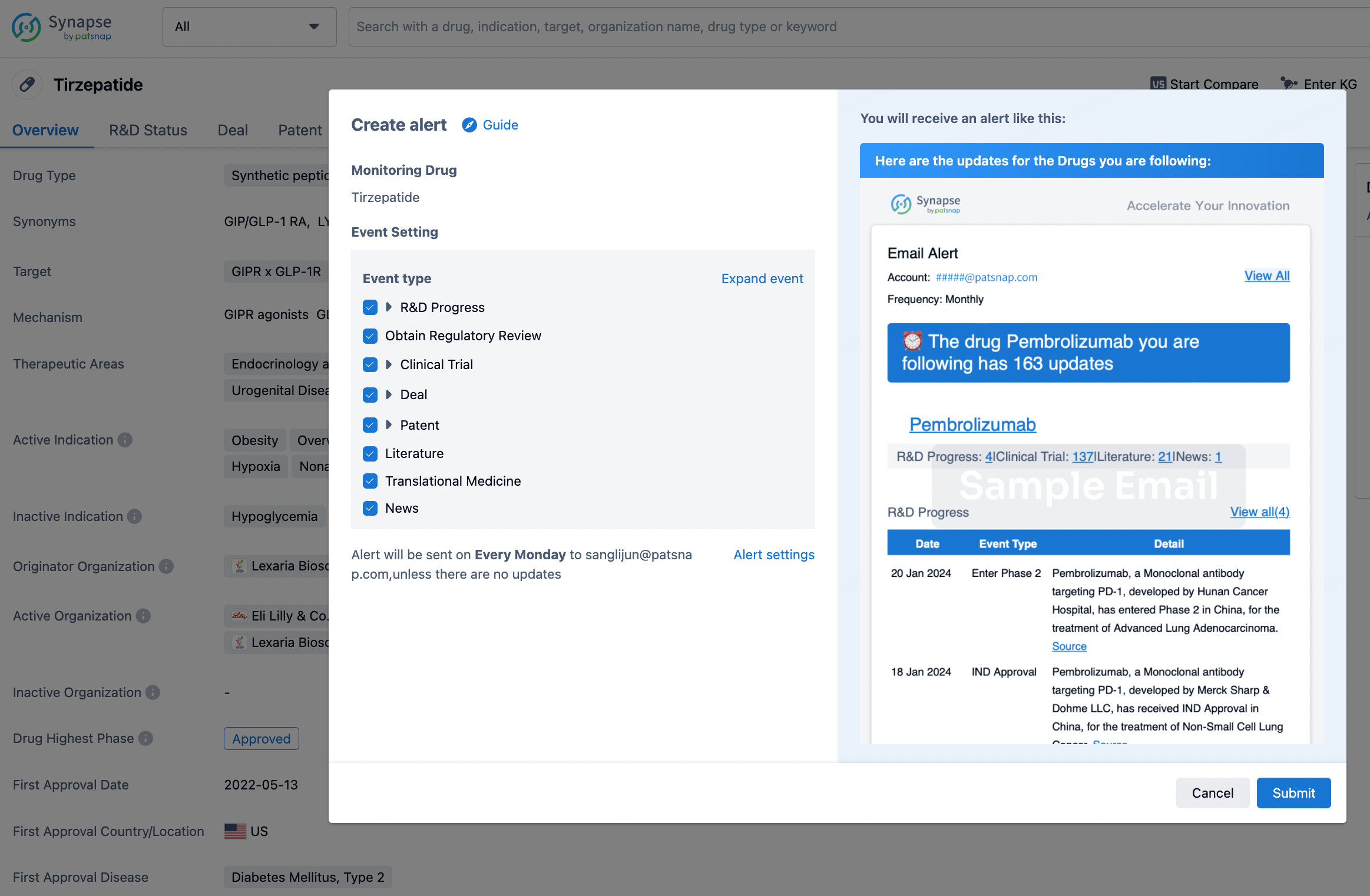Request Demo
What is the mechanism of Liranaftate?
17 July 2024
Liranaftate is an antifungal agent that has gained attention for its effectiveness in treating various fungal infections, particularly those affecting the skin, such as athlete's foot, jock itch, and ringworm. Understanding the mechanism of Liranaftate involves delving into its biochemical actions and how it inhibits the growth and proliferation of pathogenic fungi.
Liranaftate primarily works by inhibiting the enzyme squalene epoxidase. Squalene epoxidase is a crucial component in the ergosterol biosynthesis pathway. Ergosterol is a vital component of fungal cell membranes, and its synthesis is necessary for maintaining cell membrane integrity, fluidity, and function. By targeting squalene epoxidase, Liranaftate effectively disrupts the production of ergosterol.
The inhibition of squalene epoxidase by Liranaftate leads to the accumulation of squalene within the fungal cells. Squalene itself is toxic to the fungi at elevated levels, contributing to the antifungal effect. The disruption in ergosterol synthesis results in compromised cell membranes, causing increased permeability and ultimately leading to cell death. Unlike some other antifungal agents that target different steps in ergosterol synthesis, Liranaftate's specific inhibition of squalene epoxidase presents a unique mechanism that can be particularly effective against certain strains of fungi.
Due to its mode of action, Liranaftate exhibits broad-spectrum antifungal activity. It is effective against dermatophytes, which are the primary culprits behind common skin infections. Its efficacy extends to molds and yeasts, although its primary use is in dermatophytic infections. The broad-spectrum nature of Liranaftate makes it a versatile option for treating various fungal skin conditions.
Another advantage of Liranaftate is its favorable safety profile. Since it specifically targets fungal enzymes, it has minimal effects on human cells, reducing the risk of adverse reactions. This makes Liranaftate a suitable option for long-term use in chronic or recurrent fungal infections. It is typically formulated as a topical cream or ointment, allowing for direct application to the affected area, which enhances its efficacy and minimizes systemic absorption.
The effectiveness of Liranaftate can also be attributed to its ability to penetrate the stratum corneum, the outermost layer of the skin. This ensures that the antifungal agent reaches the site of infection in sufficient concentrations to exert its therapeutic effects. Additionally, it has been observed that Liranaftate has a residual effect, meaning it continues to provide antifungal activity even after the application has ceased. This property is particularly beneficial in preventing recurrence of the infection.
In summary, Liranaftate's mechanism of action involves the inhibition of the enzyme squalene epoxidase, leading to disruption of ergosterol synthesis, accumulation of toxic squalene, and ultimately fungal cell death. Its broad-spectrum activity, safety profile, and effective skin penetration make it a valuable antifungal agent for treating various dermatophytic infections. Understanding these mechanisms helps in appreciating the clinical applications of Liranaftate and its role in managing fungal diseases.
Liranaftate primarily works by inhibiting the enzyme squalene epoxidase. Squalene epoxidase is a crucial component in the ergosterol biosynthesis pathway. Ergosterol is a vital component of fungal cell membranes, and its synthesis is necessary for maintaining cell membrane integrity, fluidity, and function. By targeting squalene epoxidase, Liranaftate effectively disrupts the production of ergosterol.
The inhibition of squalene epoxidase by Liranaftate leads to the accumulation of squalene within the fungal cells. Squalene itself is toxic to the fungi at elevated levels, contributing to the antifungal effect. The disruption in ergosterol synthesis results in compromised cell membranes, causing increased permeability and ultimately leading to cell death. Unlike some other antifungal agents that target different steps in ergosterol synthesis, Liranaftate's specific inhibition of squalene epoxidase presents a unique mechanism that can be particularly effective against certain strains of fungi.
Due to its mode of action, Liranaftate exhibits broad-spectrum antifungal activity. It is effective against dermatophytes, which are the primary culprits behind common skin infections. Its efficacy extends to molds and yeasts, although its primary use is in dermatophytic infections. The broad-spectrum nature of Liranaftate makes it a versatile option for treating various fungal skin conditions.
Another advantage of Liranaftate is its favorable safety profile. Since it specifically targets fungal enzymes, it has minimal effects on human cells, reducing the risk of adverse reactions. This makes Liranaftate a suitable option for long-term use in chronic or recurrent fungal infections. It is typically formulated as a topical cream or ointment, allowing for direct application to the affected area, which enhances its efficacy and minimizes systemic absorption.
The effectiveness of Liranaftate can also be attributed to its ability to penetrate the stratum corneum, the outermost layer of the skin. This ensures that the antifungal agent reaches the site of infection in sufficient concentrations to exert its therapeutic effects. Additionally, it has been observed that Liranaftate has a residual effect, meaning it continues to provide antifungal activity even after the application has ceased. This property is particularly beneficial in preventing recurrence of the infection.
In summary, Liranaftate's mechanism of action involves the inhibition of the enzyme squalene epoxidase, leading to disruption of ergosterol synthesis, accumulation of toxic squalene, and ultimately fungal cell death. Its broad-spectrum activity, safety profile, and effective skin penetration make it a valuable antifungal agent for treating various dermatophytic infections. Understanding these mechanisms helps in appreciating the clinical applications of Liranaftate and its role in managing fungal diseases.
How to obtain the latest development progress of all drugs?
In the Synapse database, you can stay updated on the latest research and development advances of all drugs. This service is accessible anytime and anywhere, with updates available daily or weekly. Use the "Set Alert" function to stay informed. Click on the image below to embark on a brand new journey of drug discovery!
AI Agents Built for Biopharma Breakthroughs
Accelerate discovery. Empower decisions. Transform outcomes.
Get started for free today!
Accelerate Strategic R&D decision making with Synapse, PatSnap’s AI-powered Connected Innovation Intelligence Platform Built for Life Sciences Professionals.
Start your data trial now!
Synapse data is also accessible to external entities via APIs or data packages. Empower better decisions with the latest in pharmaceutical intelligence.


